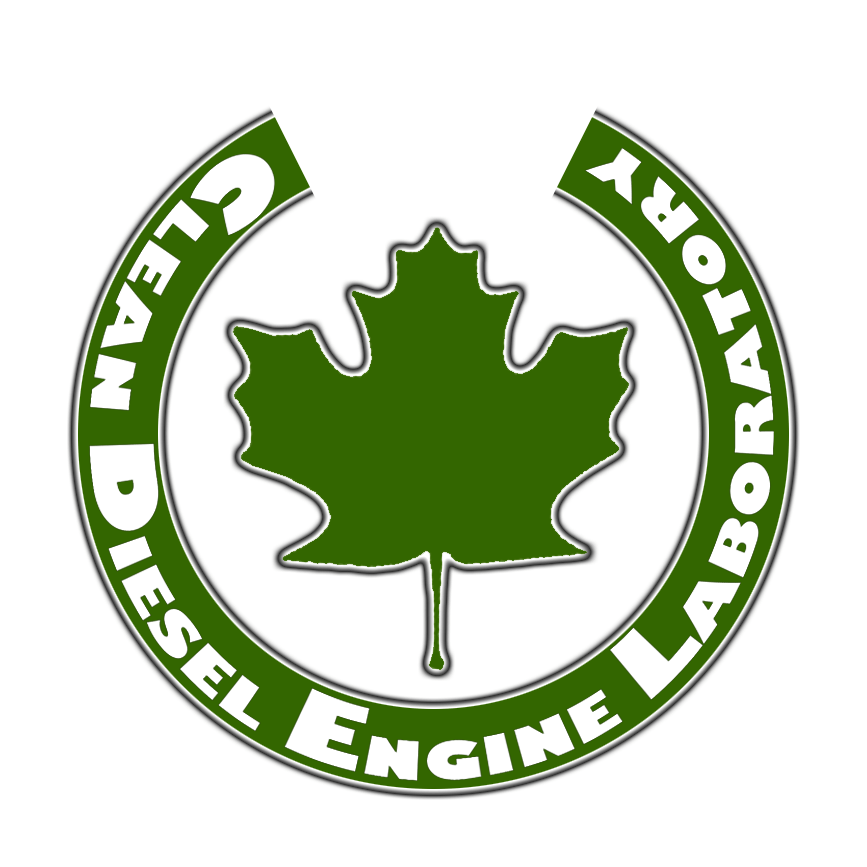

 |
Clean Diesel Engine Research Laboratory |
 |
Engine Control Room

Facilities for Control, Monitoring and Diagnostics
(From left to the right of the picture Or Click on the interested area for details)
To target future emission standards for light and heavy duty modern diesel engines, our research has been focused on the local air/fuel ratio and its CO2 dilution for the premixed portion or the total homogeneous cylinder charge. The burning of a weak (sufficiently fuel lean) and/or highly diluted homogenous charge is capable of producing ultra low soot and NOx emissions. When the engine operating condition varies, the diesel exhaust characterizes extensive variations in temperature, pressure, flow rate, oxygen concentration, and combustible contents. The fuel mixing quality is thus directly affected by the transient temperature and concentration variations of the exhaust gases upstream and downstream of the external fuel insertion. In order to prevent uneven thermal and flow distributions to the downstream after-treatment devices, it is critical to provide a precisely metered homogeneous fuel dosing using advanced real-time controllers. Recently, a new Sturman VVT system was installed in 2008 to boost our advanced combustion research in the future. An in-cylinder direct-sampling valve was implemented on one of our single-cylinder test cell connecting to fast Cambustion analyzers.
Three modern diesel test cells in our lab are available equipped with the advanced in-cylinder emission and after-treatment control and diagnostic systems. Substantial progress has been made with adaptive multi-pulse high-pressure fuel injection control. A sophisticated real-time control system has been developed to implement the adaptive combustion control and active flow after-treatment strategies. A set of embedded controllers with field programmable gate array (FPGA) and piezo power drive technologies have been tested to provide on-line heat release analysis and on-fly fuel injection control. Model-based control strategies have been implemented to improve the operational stability of HCCI (homogeneous charge compression ignition) and high dilution combustion. The laboratory’s sophisticated high-speed and high-precision equipment has enabled the research team to develop new combustion mechanisms for diesel engine applications at a leading position in the world. For instance, the control of exhaust gas recirculation (EGR), intake boost, and exhaust backpressure has been synchronized with the on-fly multi-event fuel injection control through a net work of 18 data acquisition and control computers and 4 real-time controllers. Adaptive on-fly control schemes have been applied to prevent the diesel HCCI operation from entering into the undesirable regions. Similarly, the adaptive control strategies will help to optimize the mixing quality of the active after-treatment system.
Automated Diagnostic systems with duel-bank gas analyzer systems
Exhaust gas analyzer systems (NOx/HC/CO/CO2/O2), an FTIR multi-Gas analyzer, fast Cambustion analyzers for NOx and HC.
Hydraulic-actuated Variable Valve Timing (VVT) and control systems
Individually controlled 4-cylinder system.
SMTEC in-cylinder time-resolved sampling valve
SMTEC In-cylinder sampling valve linked to fast HC and NOx Cambustion analyzers, FTIR multi-gas analyzer.
Temperature controller and monitor program
Exhaust gas temperature for automated engine coolant, fuel control
Intake gas temperature including intake heating control, air temperature
Exhaust gas at EVO, aftertreatment device, inside catalysts/DPF, EGR loop
126-temperature-channels DAQs system
Independent common-rail PCV/VCV controller
1M-gate FPGA-RT controllers for PCV, VCV as well as EGR valve control
Emission monitor & aftertreatment control
Exhaust emission monitor
Active aftertreatment controller : parallel flow, reversal flow and flow stagnation controllers with 126-ch temperature monitoring
Injection power drives for independent injection control
In conjunction with FPGA-RT, advanced clean diesel injection strategies are carried out including multiple-injection and discrete duration and scheduling management.
Solenoid power drive for mechanical injectors
Piezo power drive for piezo injectors
For EGR and aftertreatment control
Control injection, EGR valve,
duel-bank dynamometer
eddy-current dynamometer
In-house Control Programs
Cylinder pressure trace requisition program
To record 200 cylinder pressure data per cycle automatically.
To monitor air fuel ratio, intake air flow rate, gas flow-bench, and fuel flow rate .
Multiple-fuel injection control and adaptive injection control program
To generate and control injection pulse train, timing, and scheduling for up to 10 fuel pulse per injection cycle are used in the fuel injection strategies.
Online heat release analyses and adaptive combustion control program
To analyze heat release characteristics of the in-cylinder combustion at real-time online in conjunction use with the adaptive control program.
Independent boost and back-pressure control program
To monitor and control air fuel ratio, intake boost pressure and back pressure.
Data management and reporting synchronization program
To synchronize, manage and store online-data from18 Computers during an engine test and to report customized data analyses and plot charts.
Boost and EGR control program
To control intake boost pressure, EGR valve, throttle-vale, back-pressure monitoring, rail-pressure monitoring
Sensor monitoring program
To monitor temperature sensors, NOx and lambda sensors, pressure sensors.